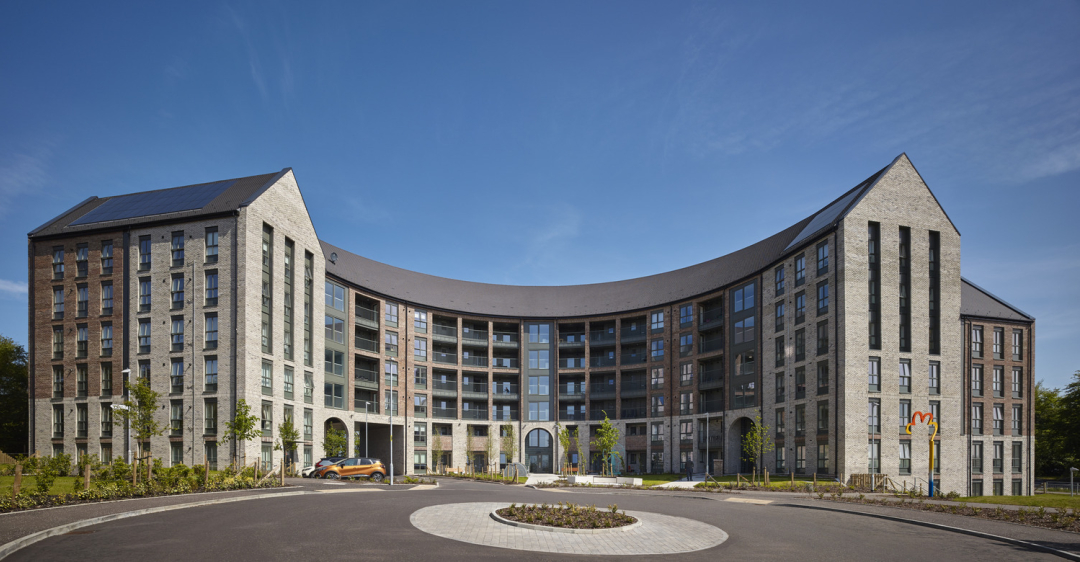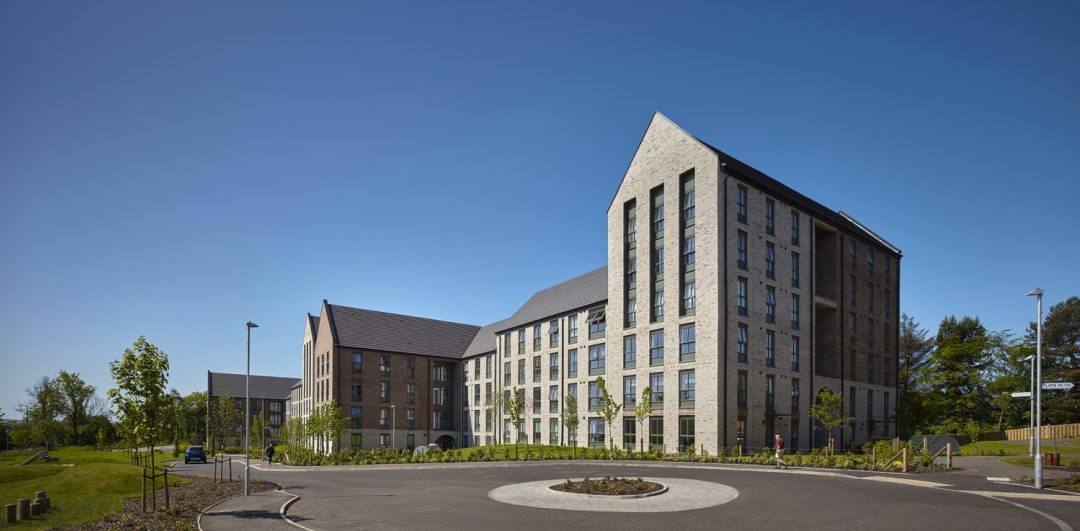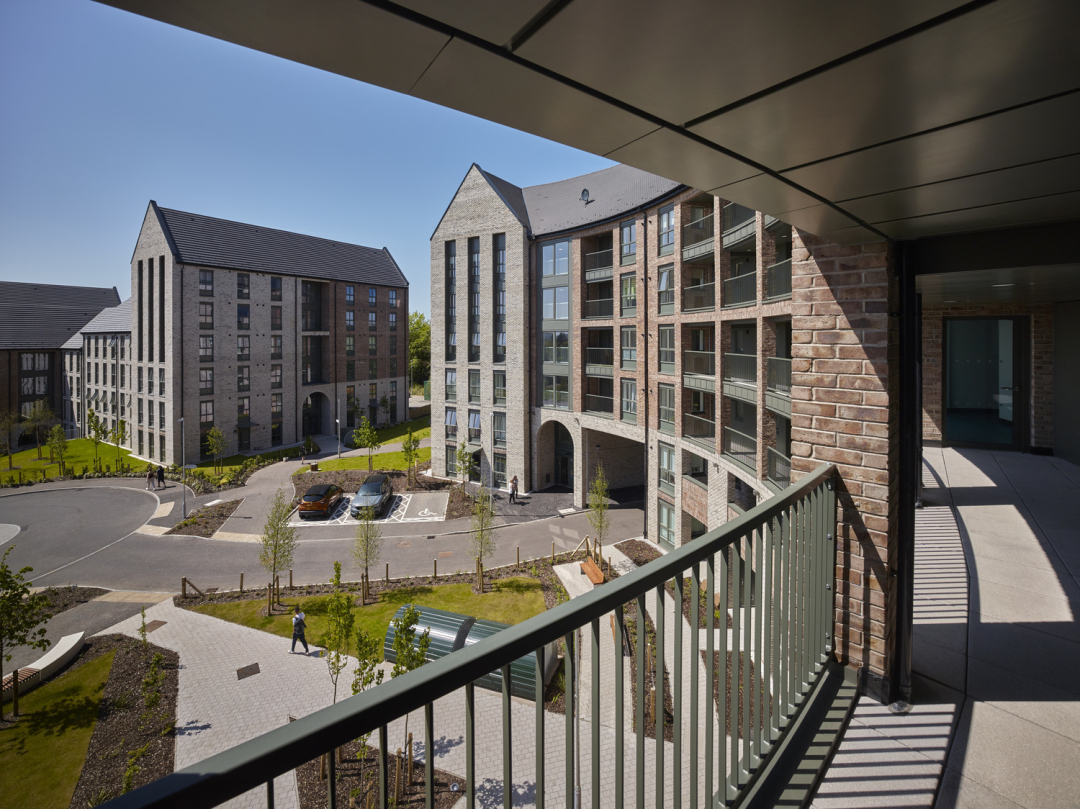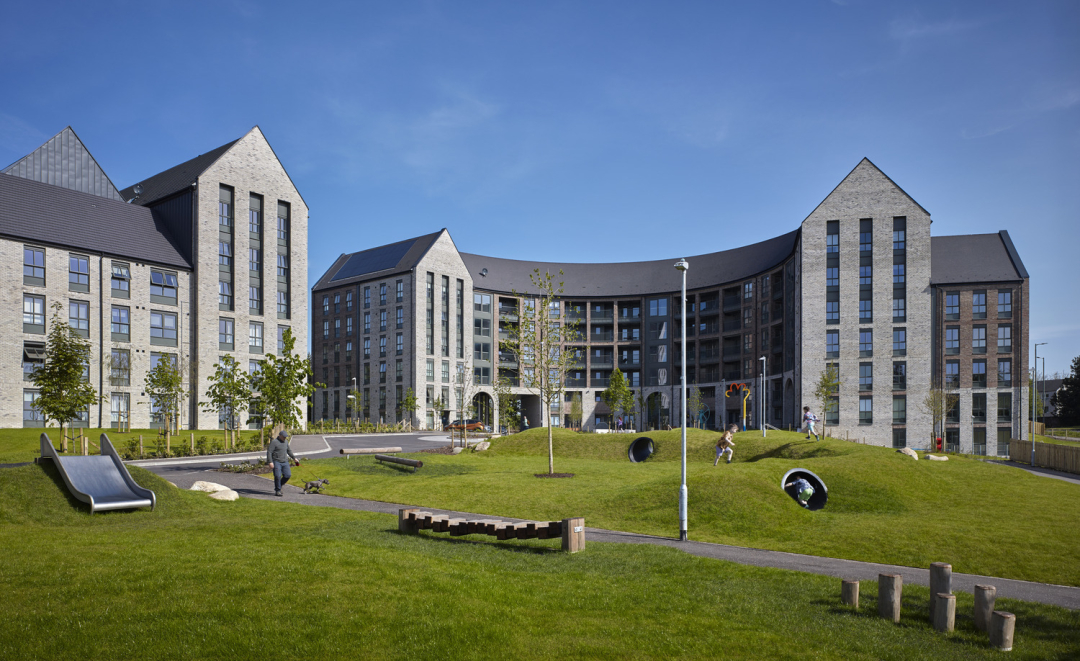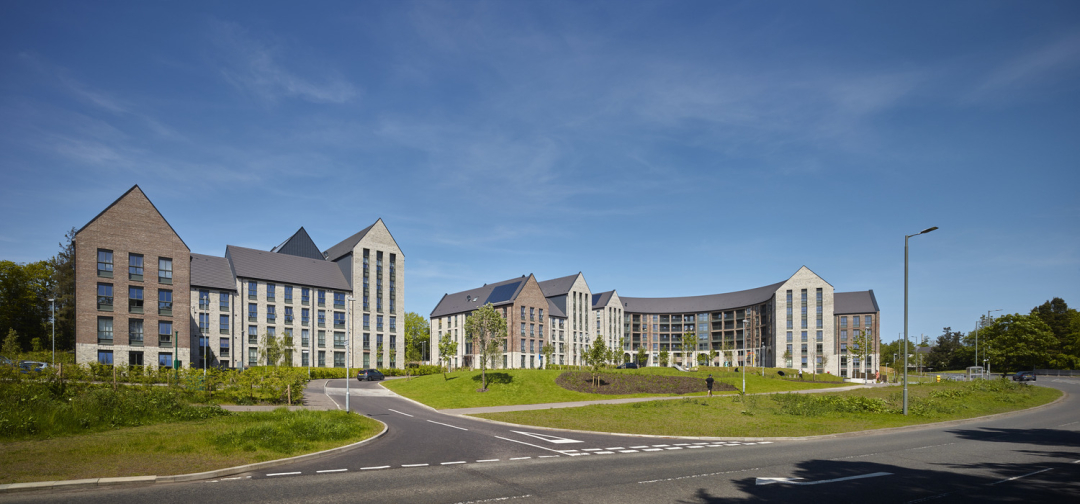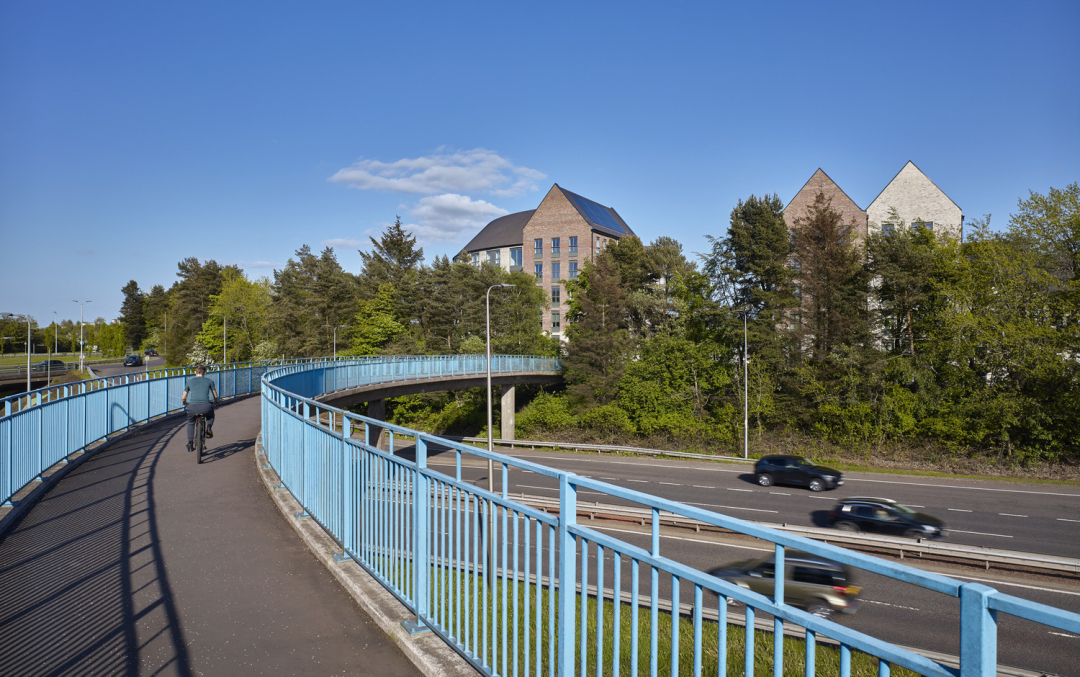Burns Road
Cumbernauld
Status
Completed
Contract
£24 million
Client
Sanctuary Scotland
Collective Architecture was commissioned in 2018 by Sanctuary Scotland Housing Association to develop proposals for a key brownfield site next to Cumbernauld town centre.
The Burns Road social housing development is located within the suburban Kildrum area of Cumbernauld. The site previously included three high rise blocks with a multi-storey carpark, which were no longer fit for purpose. The site is uniquely bound on all sides by busy carriageways and is linked by a green network of public pathways which are connected via an overpass bridge and two existing underpasses.
Sanctuary Scotland led the regeneration of twelve high rise blocks within Cumbernauld known as the ‘High Rise Regeneration Project’ which included the three tower blocks in Burns Road, to provide new social housing homes to meet current space and energy standards. The scheme nestles within this ‘island’ site which includes a mature woodland canopy line, screening three sides of the Central Way carriageway. The existing pathways through the site were poorly considered and passed around the outskirts of the site via steep gradients which gave the impression of secluded and unsafe pedestrian links. The varied topography across the site created a unique opportunity to develop residential spaces that capitalise on the changing levels and maximise southerly aspect onto an open parkland with northerly views to the Campsie hills.
A range of contemporary two and three bed flat types are provided to Housing for Varying Needs standards, with eight units designed to be future adaptable for wheelchair access to fulfil Sanctuary Scotland and North Lanarkshire Council’s tenancy needs. Sanctuary Scotland aspired to further improve the health and wellbeing of the new residential flats by seeking to incorporate HAPPI standards with enhanced common social spaces.
Through extensive community consultation, the project team aimed to deliver contemporary amenity flats, varying between four to six stories, set within high quality landscaping and new public spaces. The ambitious design provides a signature curved block with deck access, which mirrors the curved boundary to the north of the site and two straight blocks with distinct gable ends. The blocks have been designed to provide varying scale to minimise overshadowing from the southernly aspect and give pronounced height to each ‘gateway’ entry point for improved wayfinding. Responding to the steep and complex topography, the roof-scape of the development is varied via alternating tiled pitched roofs which celebrate the traditional Scottish gable form.
At an urban level, the design ambition strengthens and enhances the existing footpath network to create active frontages, a new central circus and communal garden spaces linked via new accessible pathways all within a 20minute neighbourhood. Parking is located to the rear of the development to ensure the landscaping and footways remain uncluttered by cars. The variety of proposed open spaces improve pedestrian permeability throughout the site and provide flexible and welcoming spaces for people to live, visit and socialise.
The development provides quality brick detailing, with light grey bricks forming a solid base to each block to contrast the darker clay brick at key upper gateway facades and colonnades. The proportions of the alu-clad windows are elongated via matching green grey panelling, adding further relief to the façade via three distinct deep recessed window reveals for gateway gable ends. Arched entranceways are clad in recessed jade glazed brickwork provide a welcoming, reflective quality and offer continuity of the curved form from plan to elevations. The materials colour palette is deliberately restrained to enhance the block massing and compliment the lush green surroundings of the site.
The project team also endeavoured to enhance the public spaces via sculpture, outdoor play and seating. Sculpture formed part of the existing tower blocks by artist Brian Miller and moulds were taken prior to demolition. Brian was one of the world’s first ‘Town Artists’ and exclusively created sculpture for Cumbernauld from 1962 onwards and his work is faithfully reconstructed within the parkland.
Not content with looking to the past, Sanctuary Scotland also commissioned artist Laura Aldridge to consider sculpture along pathways and resident spaces. Taking inspiration from the Cumbernauld landmark the St Enoch Clock, Laura created engaging works which can be seen from residents’ windows, be sat on, passed through and used imaginatively by residents in other ways. A further sculpture from world famous sculptor, Andy Scott, The Vitruvian Girl, was also re-located to the curved block circus to compliment the placemaking.
The site includes a naturalistic informal play space, creating a safe environment for children to play freely. Small play-mounds, fixed timber play equipment and slides offer great physical challenges for children whilst incorporating the landscaping to create natural boundaries. Sanctuary recognise that landscaping plays a vital part within social housing schemes, by offering residents the opportunity to engage with nature on their doorstep, a place for reflection and a safe environment in which children can thrive.
The landscape strategy proposed the retention and protection of the existing woodland belt along the embankment to the west of the site with new large-scale avenue trees along the east of the site at North Carbrain Road. Internally, the new hierarchy of routes and spaces are defined by varying scales of tree planting ranging from large street trees defining the public open space on the east, to smaller, garden scale tree planting associated with the three communal gardens signalling the entrance to a residential setting.
The landscape design considers the access to outside space of paramount importance, so each communal garden is laid out to maximise use with opportunities for seating with natural surveillance close to front doors, orientated to make the most of the southerly aspect. All specified materials are from industry standard leading trades to ensure these are manufactured sustainably, easy to maintain and durable for the purposes of social housing residential management.
The development includes dual aspect flats which are oriented to maximise solar gain onto the parkland and provide natural surveillance. The full development is designed to meet Silver Standard aspects 1 and 2 of the building regulations. The strategy to achieving these targets combined thermally efficient design, integrated photovoltaic renewables, highly efficient heating / ventilation systems and good practice.
The scheme actively promotes healthy living with its 5minute proximity to key transport hubs and provision of dedicated secure bike stands to each close. The common closes incorporate extensive glazed areas to provide natural light within the building to minimise the use and reliance of artificial light.

